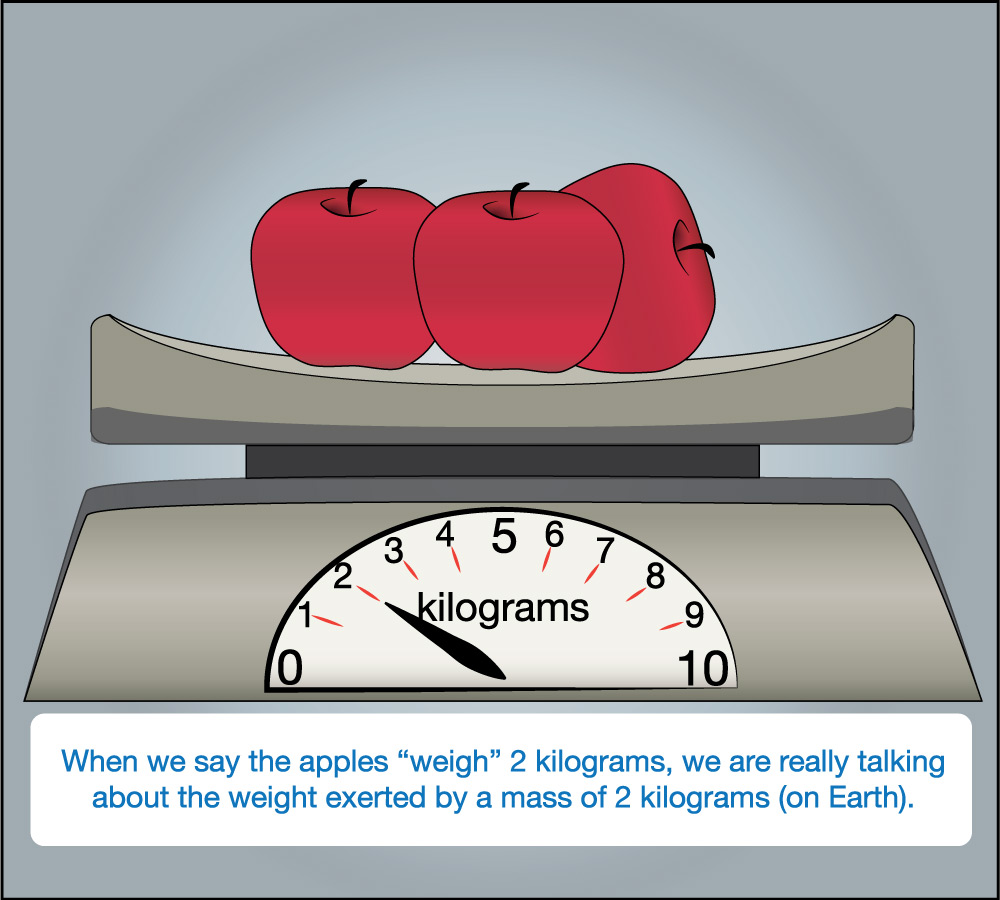Why do we sometimes use kilograms as a unit of weight when they are actually a unit of mass?
Excellent question, as this can be confusing unless you think through it carefully. Technically, kilograms are a unit of mass, not weight. Recall from Section 3.4.2 that mass and weight are subtly different: an object’s mass describes the actual amount of matter within it, while the object’s weight is the downward force it exerts due to gravity. (More specifically, an object’s weight is related to its mass by the equation weight = mass × acceleration of gravity; the standard metric units of weight are called newtons (see this earlier box for details).)
However, outside of science, this distinction between mass and weight is almost always ignored. For example, metric scales almost always show their “weights” in kilograms (Figure 1). If you want to be technically correct, you should say that the scale in Figure 1 is telling you the mass (in kilograms) that is exerting weight on the scale, rather than the actual weight (which would be measured in newtons ). But most people would just say that the apples “weigh” 2 kilograms.

This way of using kilograms for weights doesn’t really cause any problems, as long as you remember that it works only on Earth. You could not use the same scale on another world (or when floating weightlessly in space, where the scale would read zero), because the strength of gravity would be different. That is why you see the words “on Earth” in Figure 1.
Note that this also means that while it’s fine to describe Earth’s atmospheric pressure in units of kilograms per square centimeter, you should not use these same units for other worlds. Instead, you can talk about the pressure on other worlds by comparison to Earth, as we did in Tables 4.3.1-1 and Tables 4.3.1-2, or in other standard pressure units (such as the standard metric pressure units of pascals ).